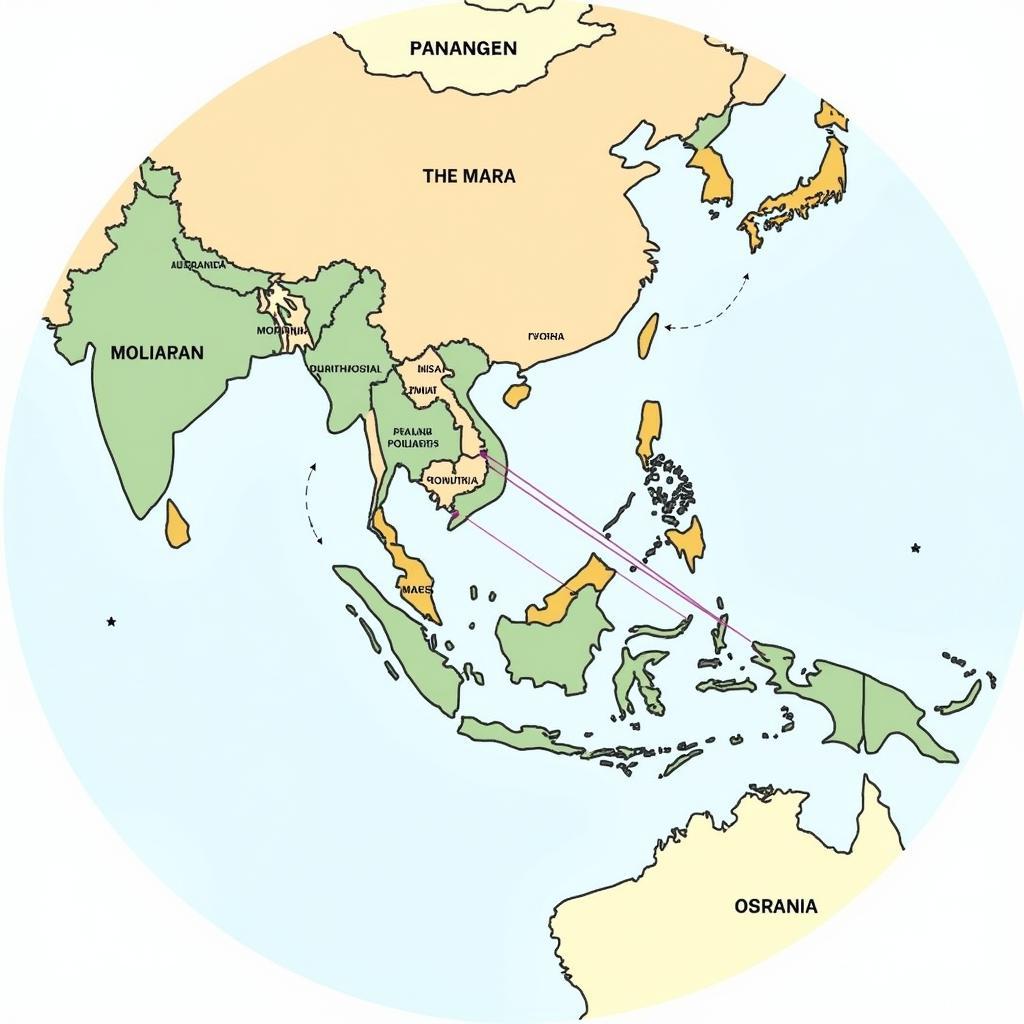AFTA, ASEAN, and China: These three entities are intricately woven into the fabric of Southeast Asian economics and trade. Understanding their relationship is key to grasping the region’s dynamic growth and future prospects. This article delves into the complexities of this trilateral dynamic, exploring the impact of the ASEAN Free Trade Area (AFTA) on trade relations between ASEAN member states and China.
AFTA: The Engine of ASEAN Economic Integration
AFTA, established in 1992, aimed to reduce tariffs and non-tariff barriers among ASEAN member states. This initiative has been instrumental in boosting intra-ASEAN trade and attracting foreign investment. The free flow of goods and services within the region has created a larger market, fostering economies of scale and enhancing competitiveness. does asean have free trade offers more insight into the mechanisms and benefits of ASEAN’s free trade policies.
How has AFTA impacted trade with China?
AFTA has indirectly influenced trade with China by strengthening ASEAN’s position as a trading bloc. A more integrated and economically vibrant ASEAN presents a more attractive market for China. This has led to increased trade volumes and deeper economic ties between the two.
The ASEAN-China Free Trade Area (ACFTA): A Game Changer
The establishment of ACFTA in 2010 further cemented the economic relationship between ASEAN and China. This agreement created the world’s largest free trade area in terms of population, covering a market of over 1.9 billion people. ACFTA has significantly reduced tariffs on a wide range of goods, stimulating bilateral trade and investment flows.
Benefits and Challenges of ACFTA
ACFTA has yielded substantial benefits for both ASEAN and China, including increased trade, enhanced market access, and greater investment opportunities. However, it also presents challenges, such as concerns over trade imbalances and the impact on domestic industries. artikel cafta china asean free trade area provides a detailed analysis of ACFTA’s implications.
China’s Growing Influence in ASEAN
China’s economic influence in ASEAN has grown considerably over the past two decades, driven by increasing trade, investment, and infrastructure development projects. China’s Belt and Road Initiative (BRI) has further deepened its engagement with the region, facilitating connectivity and fostering closer economic cooperation.
Navigating the Complexities
Managing the relationship with China requires a nuanced approach from ASEAN. While benefiting from China’s economic dynamism, ASEAN also needs to address concerns related to regional security and maintain its strategic autonomy. asean as an international organization explores ASEAN’s role on the global stage.
The Future of AFTA, ASEAN, and China
The interplay between AFTA, ASEAN, and China will continue to shape the economic landscape of Southeast Asia. Deeper regional integration, coupled with China’s continued economic expansion, presents both opportunities and challenges for ASEAN.
“ASEAN must leverage its collective strength and strategic partnerships to navigate the complexities of the evolving regional landscape,” says Dr. Wei Ling, a prominent economist specializing in Southeast Asian affairs.
Conclusion
The dynamics between AFTA, ASEAN, and China are complex and multifaceted. AFTA has laid the foundation for ASEAN’s economic integration, while ACFTA has deepened economic ties with China. Navigating this relationship strategically is crucial for ASEAN to maximize the benefits while mitigating potential risks. Understanding these intricacies is essential for anyone interested in the future of Southeast Asia. asean achievements and future prospects offers further insights into ASEAN’s trajectory.
When you need support, please contact us at Phone Number: 0369020373, Email: [email protected] Or visit us at: Ngoc Lien Village, Hiep Hoa, Bac Giang, Vietnam. We have a 24/7 customer service team.


